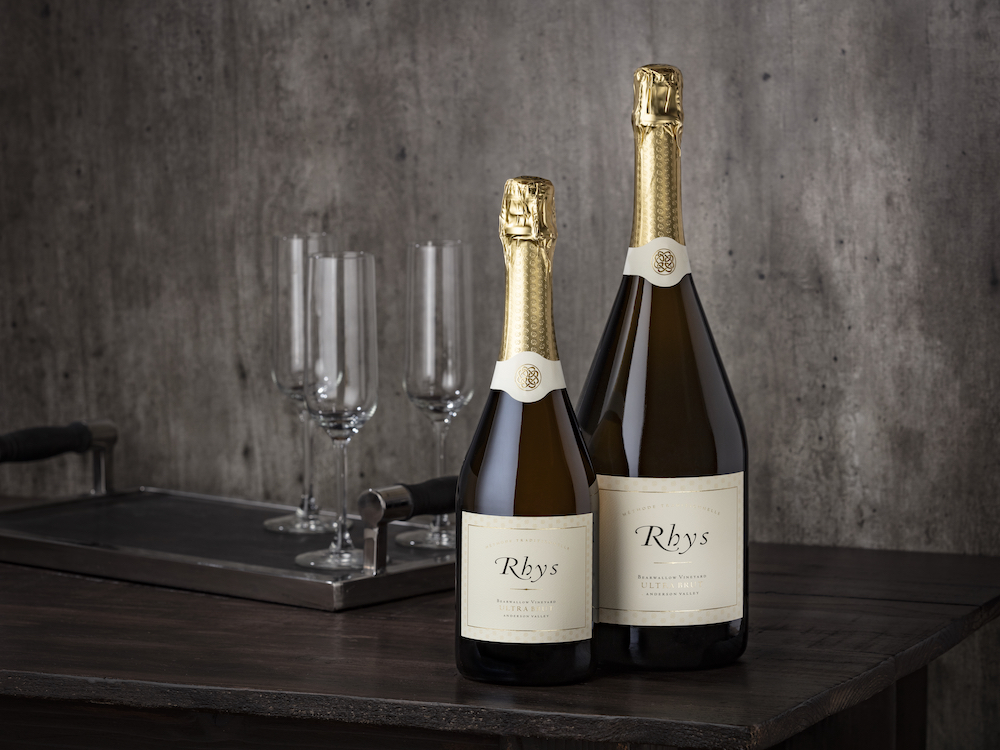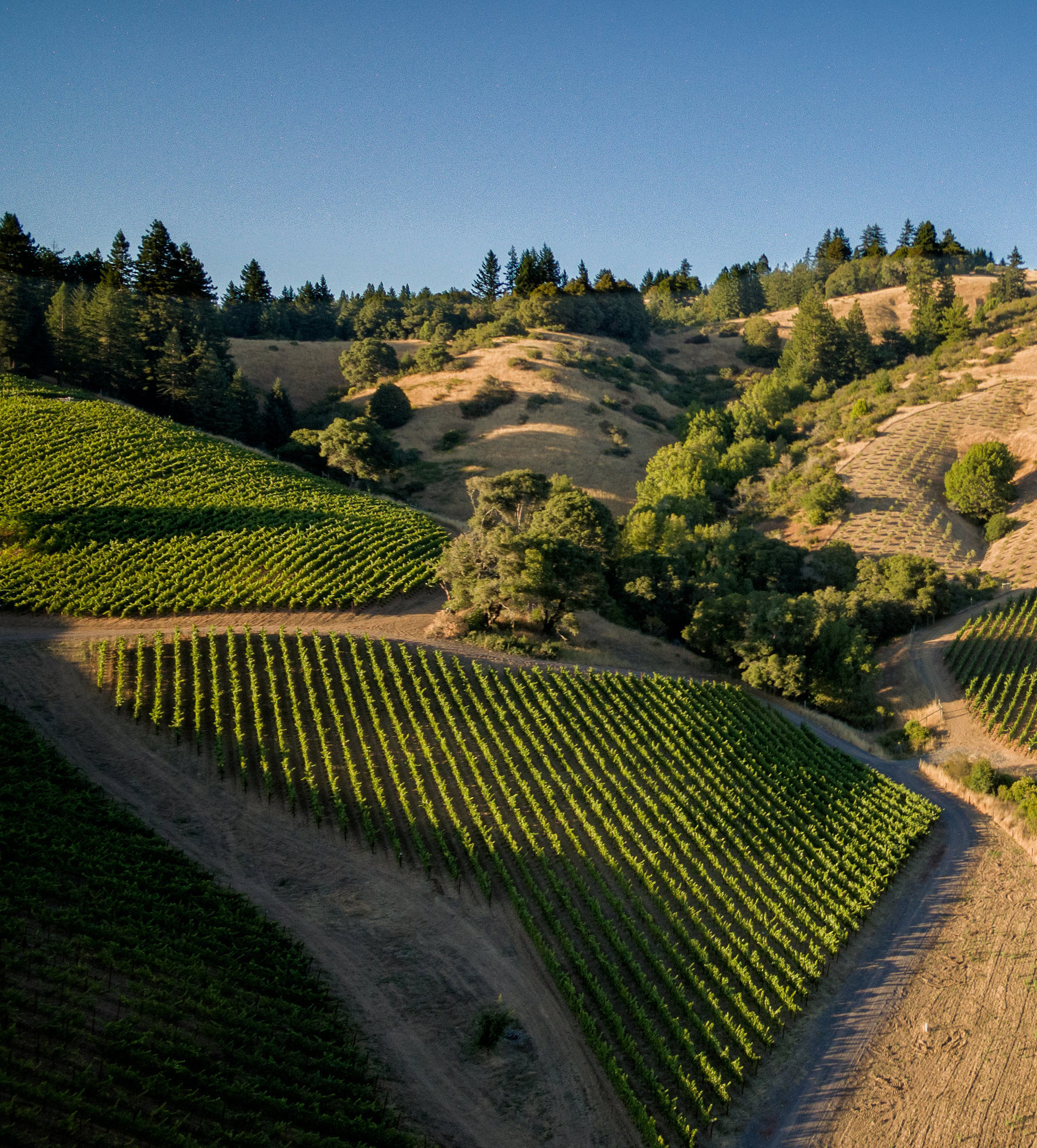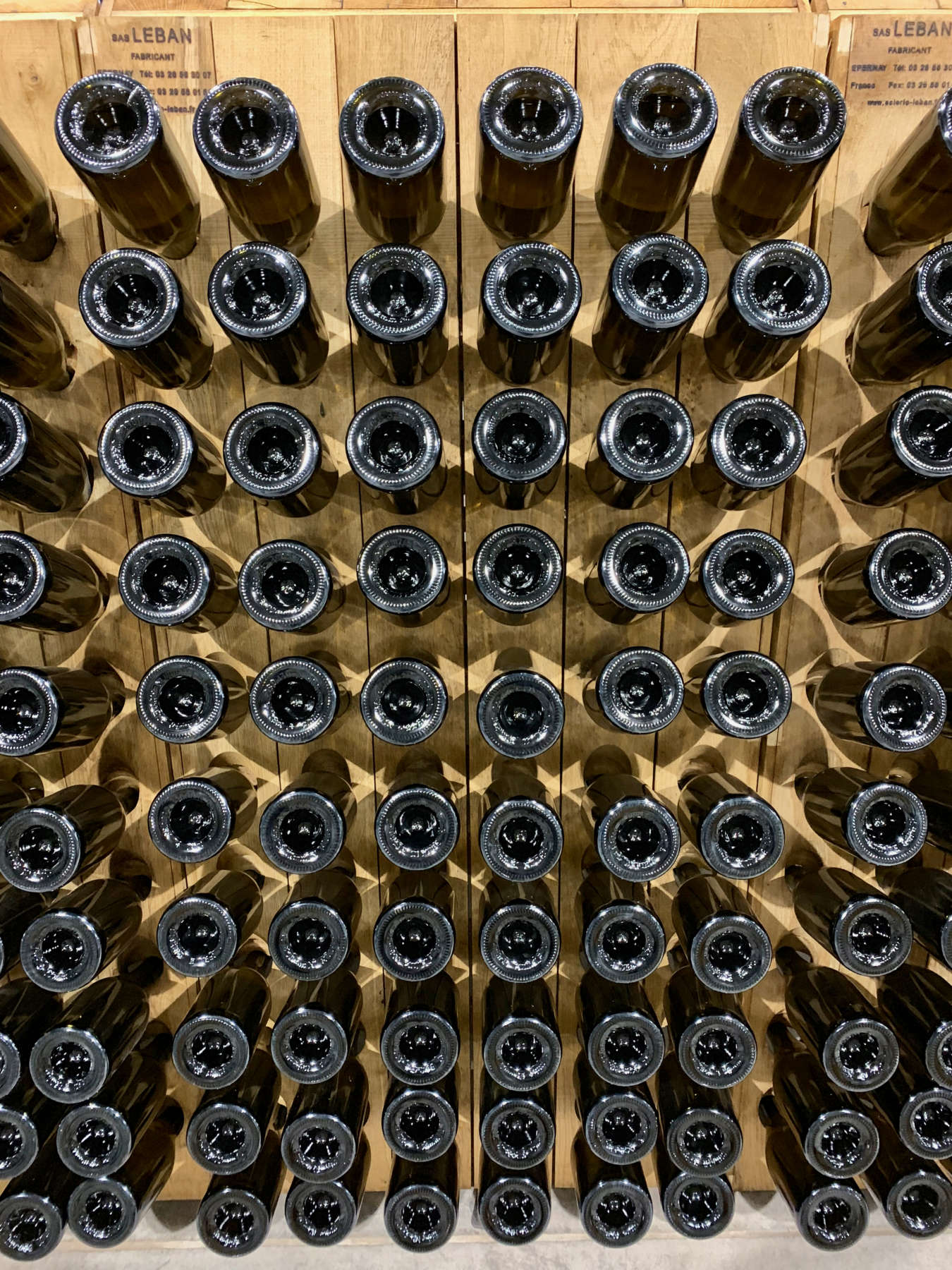In Pursuit of great American Sparkling Wine

The Rhys sparkling wine idea gestated and evolved for many years. It began as a conversation with our Champagne-loving spouses and gained steam while observing the revolution brought about by the grower movement in Champagne over a decade ago. As with many endeavors, the first step is to clarify the objectives. In our opinion, a great American sparkling wine would feature the elegance and balance of Champagne but highlight the unique expression of our very different soils. After some investigation and experimentation, we concluded that to fully achieve these stylistic goals, we would need to start “from the ground up” and plant specific sparkling-dedicated blocks in our vineyards. There were several considerations. First and foremost, great sparkling wine needs the tension and minerality that only rocky soils can provide. Fortunately, this is also a requirement for the location of our Pinot Noir and Chardonnay vineyards. However, achieving the finesse, weightlessness and balance that we desired would be more challenging.

In order to accomplish these stylistic goals, we decided to forgo planting the California heritage selections of Chardonnay vines that we have selected for Rhys Chardonnay. Instead, we would plant selections of Chardonnay that are widely employed and highly regarded in Champagne. More importantly, we would use aspect, the orientation of the vines to the sun, to create blocks that would ripen at lower sugars with the elegance and fruit presentation that we desired. Our vineyards are quite complex and undulated and after many years of individually vinifying small blocks for still wine, we have learned that the orientation of these various hillside parcels can produce different characteristics. With this knowledge in hand, we concluded that the west-facing or north-facing blocks would yield the best results for sparkling wine. The first planting of this combination of vine selections and aspect would be a west-facing block of Chardonnay at Bearwallow vineyard. This was followed a couple of years later by a northwest-facing planting at our newest site, Mount Pajaro vineyard.
When it became time to actually make the wine, we realized that our Burgundy-inspired winemaking philosophies were inadequate and, in some ways, even counter-productive for the production of great sparkling wine. The production of sparkling wine involves careful blending of lots of wine produced by small differences in pressing. It also requires a great deal of control and precision and a less “hands-off” philosophical approach. With only one vintage each year, gaining experience in wine production can move quite slowly and we realized that in order to shorten our learning process, we needed to engage the help of someone with deep sparkling winemaking experience.
Through an introduction from a Burgundian friend, we were very fortunate to meet one of the greatest producers of grower Champagne, Rodolphe Peters of Champagne Pierre Peters. Even more fortuitously, Rodolphe had an interest in producing sparkling wine in California and agreed to collaborate with us. Working with Rodolphe has been incredibly interesting and illuminating. Growing up immersed in Champagne traditions at his family’s domaine, Rodolphe’s lifetime of sparkling wine production experience has helped him develop a very gifted palate for blending. This blending skill is critical in order to envision the final results while blending the base wines for sparkling production. We feel very fortunate to have his help!
The Rhys sparkling wine portfolio is focused on four wines:
Rhys Perpetual Reserve MV-
This multi-vintage sparkler takes advantage of a continual reserve wine made from select lots of wine each vintage. When the blend is assembled each year, the reserved wine from prior vintages is mixed with the base wine from the current vintage. Half of this blend is bottled as the new Perpetual Reserve while the remainder goes back to age until the next vintage. Aging two years on the lees preserves the freshness of the current vintage and the inclusion of the reserve wine lends the complexity of age. Expect a bright and energetic wine with classic sparkling characteristics of white and yellow fruit, citrus peel, and a touch of brioche. The low dosage highlights the terrific energy and vibrant acidity, making this a sparkling wine that is both immediately approachable and ageworthy.
Rhys Mt. Pajaro Vineyard Vintage Blanc des Blancs-
Mount Pajaro is a special place for Chardonnay and the cold northwest-facing block we selected for sparkling wine has turned into a tremendous site for making world class Blanc des Blancs. While each vintage will be different, the Mt. Pajaro Blanc des Blancs will have the longest time on lees and will always be a benchmark wine of our sparkling portfolio. The characteristics of top-flight Blanc des Blancs are on display here, showing precise chalky minerality, fresh almond/hazelnut notes, and sea salt. Small production and significant cellaring capability make this a wine to seek out.
Rhys Bearwallow Vineyard Vintage Ultra Brut-
One of the best surprises of our sparkling journey has been discovering the extremely high potential of Pinot Noir at Bearwallow for sparkling wine. As the program has been refined in collaboration with Rodolphe Peters, we’ve been able to identify some terrific vineyard blocks for sparkling. The result is our vintage Ultra Brut, a blend that utilizes the best lots of Bearwallow Chardonnay and Pinot Noir from each vintage. The low dosage preserves the freshness and elegance of this vintage sparkler, while the time on the lees adds complexity and depth.
Rhys Bearwallow Vineyard Vintage Rose-
The discovery of high quality sparkling Pinot Noir blocks at Bearwallow made producing a Rose almost a necessity! The traditional method of making Rose is referred to as the “saignee” method, which describes the process of leaving the destemmed and crushed berries with the skins to macerate until the right color is achieved, at which time it’s immediately pressed. This can take anywhere from a few hours to a day or more, but this laborious process produces a beautiful wine bursting with floral and red fruited elegance. Several years of lees aging are required to build depth and complexity but the results will be well worth the wait. The Vintage Rose will be a wine that’s delicious at release but will certainly improve in the cellar.
